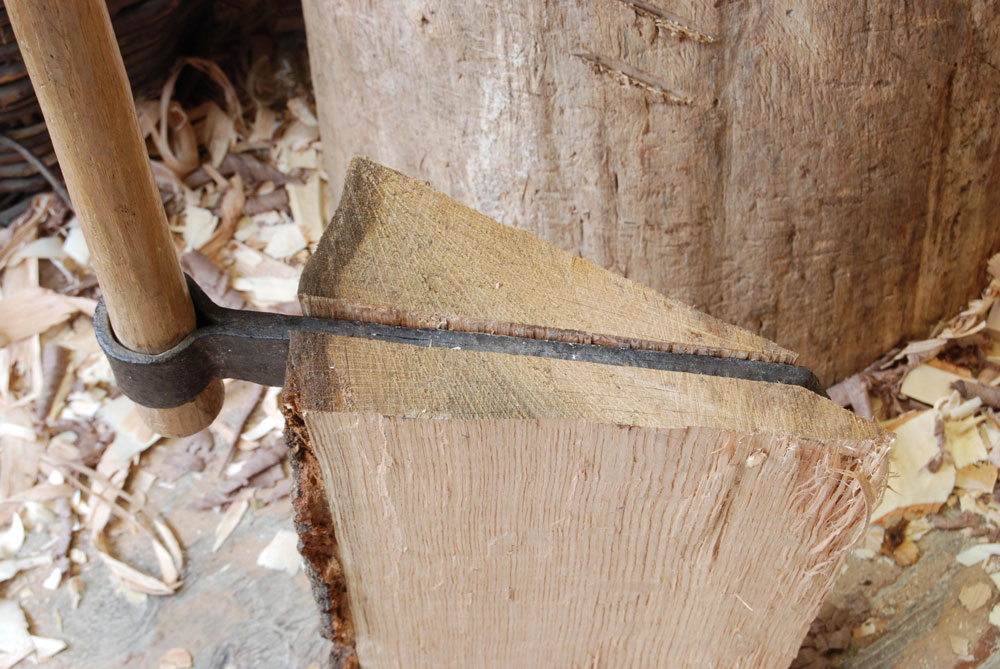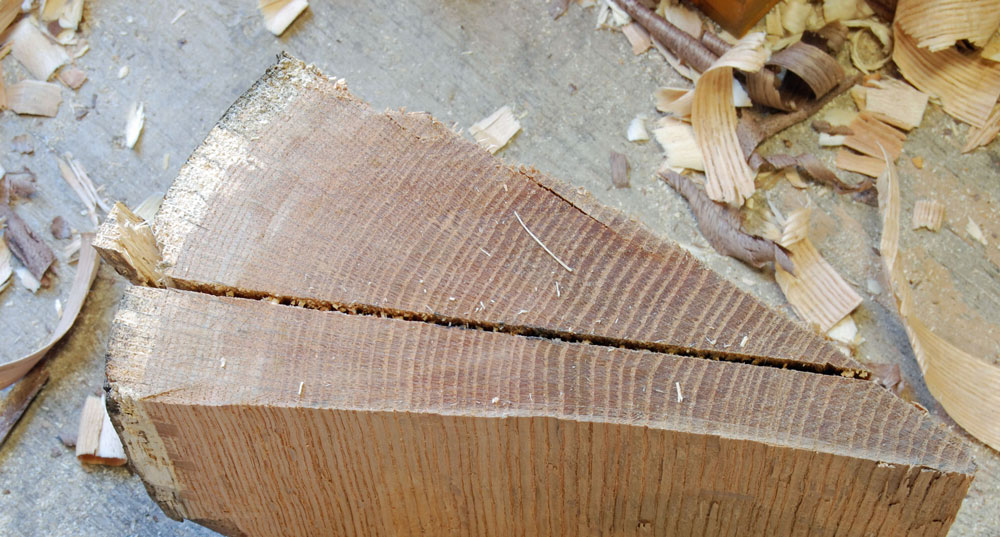In our joint stool projects, Jennie Alexander and I always struggled with the riven seat board. It takes a VERY large diameter oak to get a quartered board almost 11” wide. When it came to writing “Make a Joint Stool from a Tree,” we were faced with the question: “What to tell the readers?” We settled on a few scenarios: some will have one-board seats from large logs; others will use two-board seats. We’ve done both. Then, I worked out a way to squeak a board out of stock that comes up just a tiny bit narrow.
This requires breaking a cardinal rule of riving — ALWAYS SPLIT IN HALF.
When we got to that part of the book last year, I had no large oaks even close to what I
wanted. The solution was for me to sketch my splitting technique and have Eleanor Underhill make one of her excellent diagrams for the book. But first I had to get it by Alexander, which meant numerous refinements on my explanation of this splitting. We had never done this particular method together.
Now, in making joined chests, you are faced with similar challenges; only it’s the need for wide panel stock, not seat boards. Today I split out some very straight-grained oak that came up to about 9” wide in the radial face. I wanted 10” of course. Having seen how flat these radial planes were, I knew I could break off a panel against the rules and get my wide stuff….
I didn’t have time for detail photos, but I did manage to shoot these two. Above you can see the froe driven into the end grain across the radial plane — it takes a good log to break this way successfully.
Here is a detail of the end grain of an off-cut from this log, showing the same sort of split. So refer to fig. 3-25 on page 43 and its related text. Then think of these photos. Sometimes 1/2” to 3/4” can make a difference.
— Peter Follansbee, Joiner’s Notes



Come to South Texas, we have literally millions of old oaks that size that didn’t make it last year through the drought.
I’ve riven oak like that before when I wanted a wider piece. I generally shoot for the same amount of surface area on both sides of the split, regardless of whether or not the two halves are symmetrical. This seems to balance the bending stresses well enough that you get a decently straight split, even if the material isn’t quite perfect. It looks like that’s what Follansbee is doing as well.
I have six old large oaks that need to come down when I can afford it. The smallest is 32″ across about 4 feet up from the ground. The largest has a diameter of just under 5 feet.